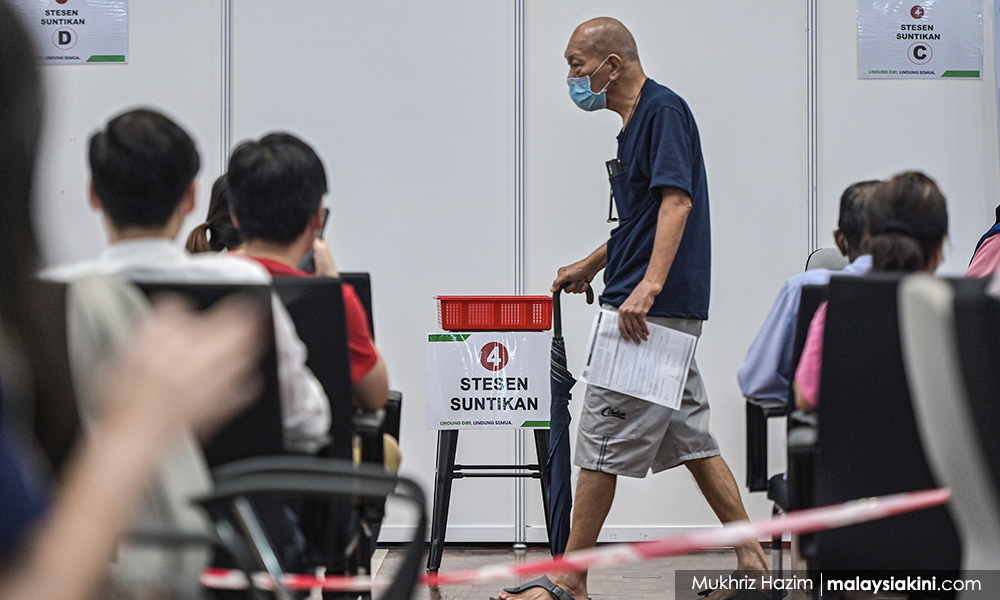An analysis of Health Ministry data has underscored a large disparity between who is likely to get Covid-19 and potentially pass on the disease to others, versus who is most likely to die of the disease.
This came after the ministry released a breakdown by age group of the 285,411 Covid-19 cases recorded from Jan 1 to April 27.
It was found that young adults aged 20 to 39 account for more than half (56.4 percent) of cases recorded during that period.
When adjusted for the population size of that age group, that meant 1,372 people had been infected for every 100,000 people in that group.
For comparison, the overall incidence of Covid-19 in the country during that period was only 834 cases per 100,000 population. Malaysia’s estimated population for this year is 34.2 million.
When compared against the ministry’s daily report of Covid-19 deaths during the period, however, this age group accounts for only 52 out of 991 deaths (5.2 percent).
This was based on Malaysiakini’s tally of the ministry’s daily reports.
When adjusted for the relatively large population size of this age group, this equates to 0.4 deaths per 100,000 - healthy or otherwise - people of that age. Even just amongst those who got the disease, the case fatality rate was about 0.01 percent.
Seniors disproportionately at risk
Conversely, people between the ages 70 and 79 account for only 1.7 percent of cases compared to 24.2 percent of deaths. This corresponds to 4,872 infections, of which about one in 20 did not survive.
When adjusted for the relatively small population for the age group, this corresponds to an incidence of 417 cases per 100,000 people of that age and a Covid-19 death rate of 20.5 deaths per 100,000 people.
Those above 80 years old fared even worse – accounting for 0.6 percent of cases and 18.8 percent of Covid-19 deaths. This meant 1,646 people of that age had been infected, of whom more than one in 10 did not survive.
There are only 405,000 people of that age, so that corresponds to an incidence of 406 cases per 100,000 people and 45.9 deaths per 100,000 people of that age.
For comparison, there had been 2.9 deaths per 100,000 people for all of Malaysia during this nearly four-month period. Amongst those who got the disease, 0.35 percent died.

'Long Covid-19's burden still unclear'
Recovery versus death alone does not tell the full story of Covid-19’s burden on health, however.
Studies abroad have repeatedly shown that even those with mild or no symptoms in the initial infection are at increased risk of developing other health problems in the weeks and months that follow.
This field of "Long Covid-19" (or Post-Acute Sequelae of SARS-CoV-2 Infection, PASC) is still poorly understood, but have uncovered some life-threatening conditions such as an increased incidence of stroke and heart problems compared to those who weren’t infected with Covid-19.
Children, in particular, are at risk of developing Multisystem Inflammatory Syndrome in Children (MIS-C) after recovering from Covid-19, which is rare but also life-threatening.
A recent US study found 75 percent of children whose MIS-C symptoms were severe enough to require hospitalisation showed no Covid-19 symptoms during their initial infection.
The Health Ministry is conducting its own research of the disease’s long-term effects, but has yet to announce any findings thus far. Doctors have urged the government to set up specialist clinics across the country for treating Covid-19 survivors, including by providing rehabilitation and psychiatric treatment. - Mkini

No comments:
Post a Comment
Note: Only a member of this blog may post a comment.